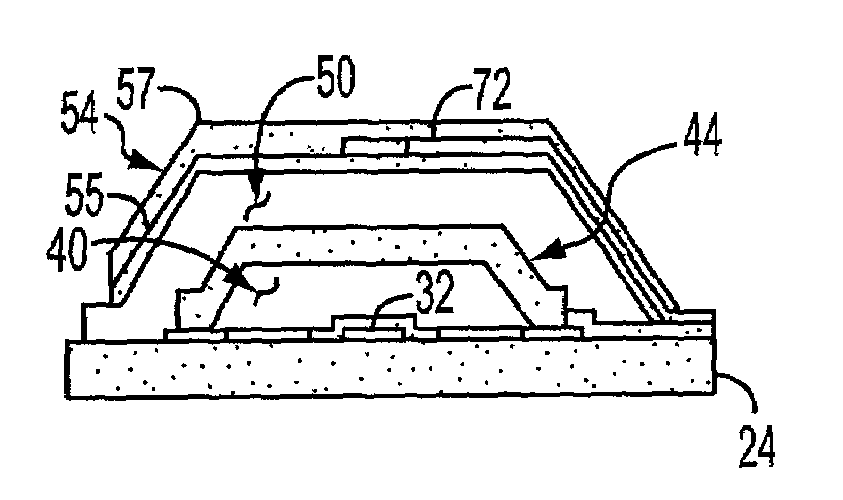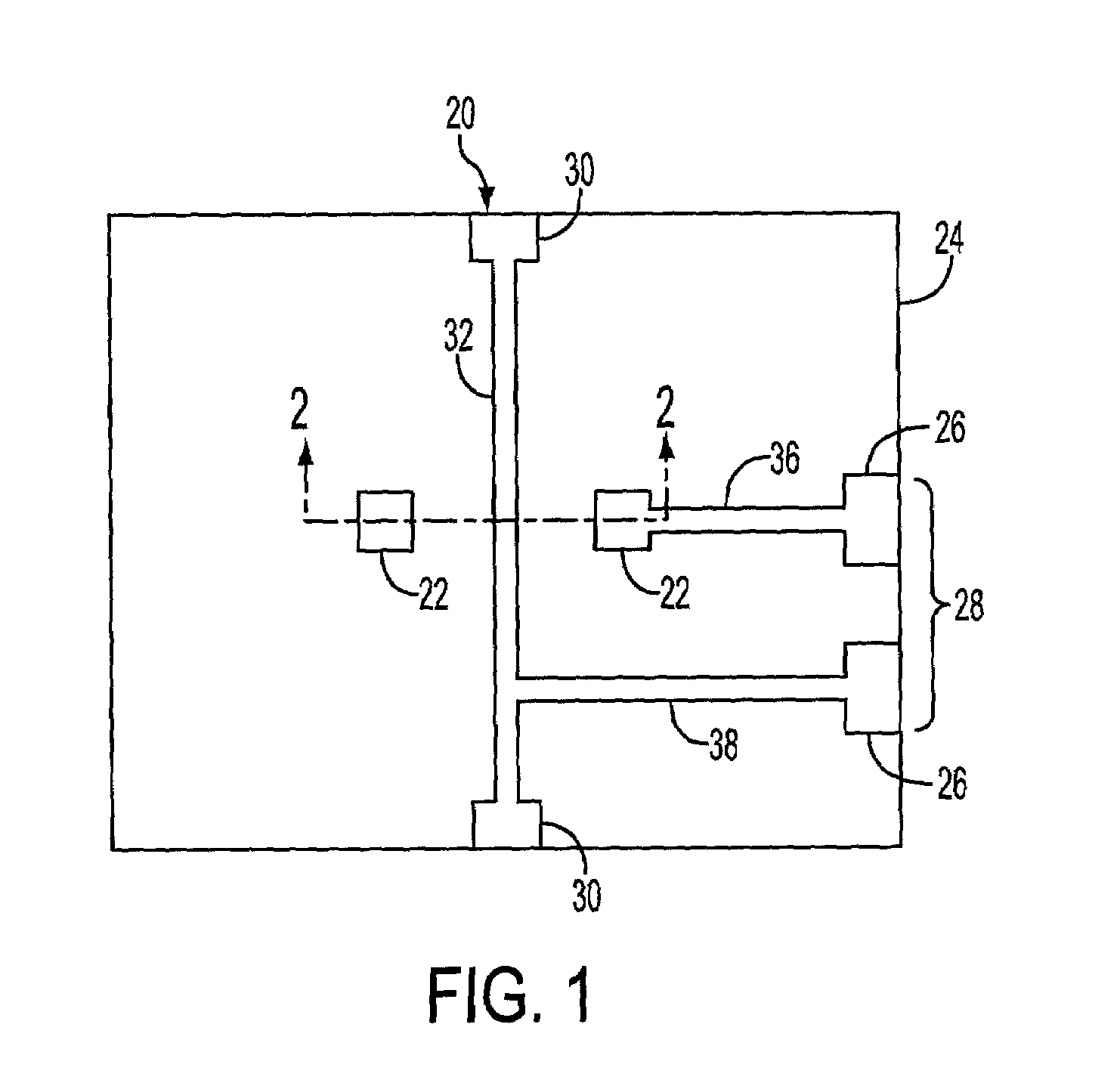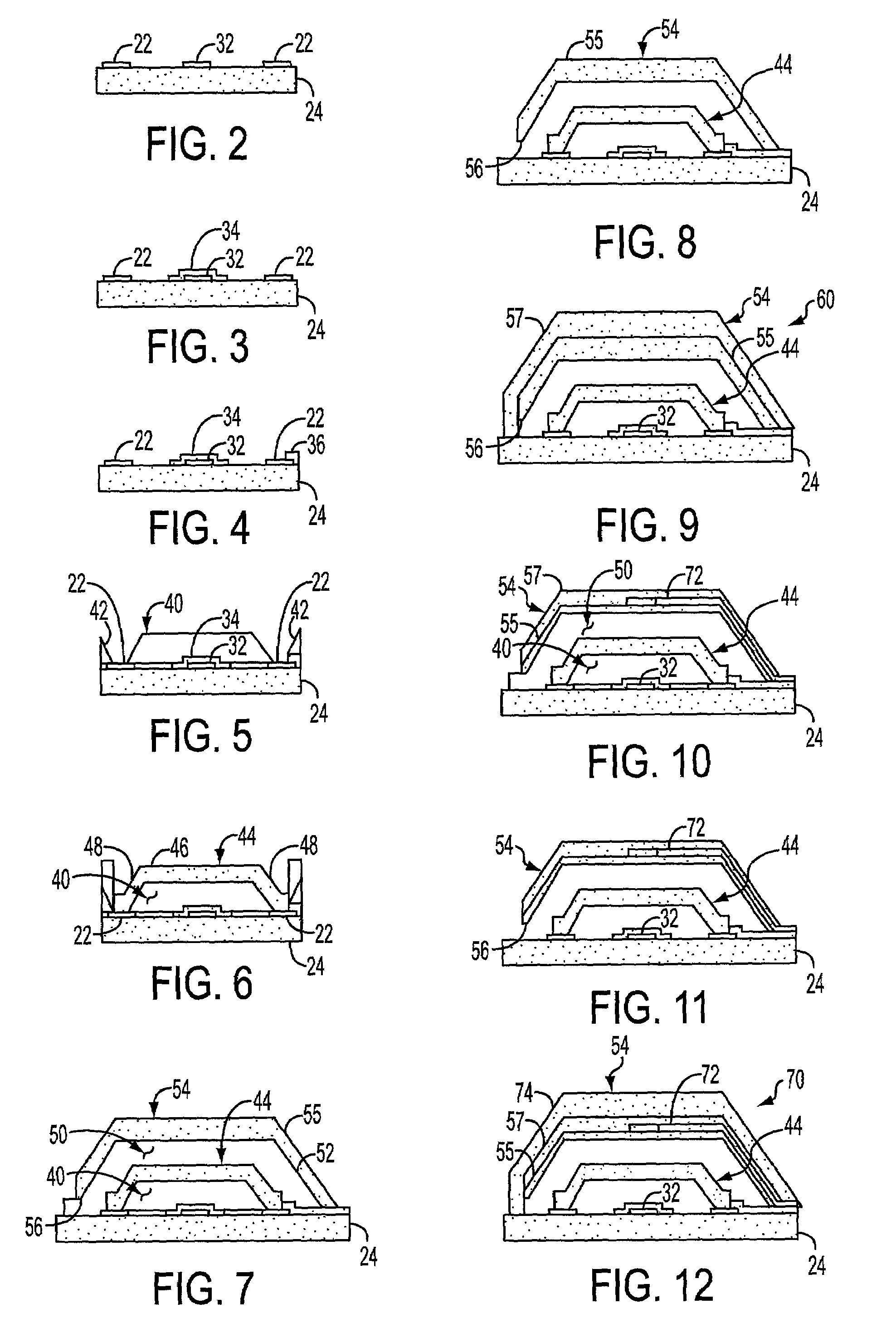Thin film encapsulation of MEMS devices
a technology of mems devices and thin films, applied in the field of microelectromechanical systems, can solve the problems of increasing the separation time, affecting the switching speed and response of the device, and the general sensitivity of the mems device to environmental conditions, so as to reduce the size and cost of the electronic system
- Summary
- Abstract
- Description
- Claims
- Application Information
AI Technical Summary
Benefits of technology
Problems solved by technology
Method used
Image
Examples
first embodiment
[0018]A method of manufacturing a MEMS device according to the present invention is illustrated in FIGS. 1–9. The method can be used to manufacture a variety of MEMS devices but is particularly advantageous when used to manufacture a two electrode switch for radio frequency (RF) applications as shown and described herein.
[0019]In the first step, illustrated in FIGS. 1 and 2, a first signal network 20 and anchor pads 22 for a movable member are formed on a substrate 24. Bond pads 26 for a control circuit 28 can also be formed on the substrate 24 in this step. The first signal network 20 shown in FIG. 1 includes a pair of bond pads 30 located at opposite edges of the substrate 24 and a stripline 32, which also acts as an actuating element, which is described in detail below extending between the bond pads 30 to function as a first electrode. The first signal network 20 and pads 22 can be formed on the substrate 24 in any conventional manner but are preferably formed using a lift-off p...
second embodiment
[0033]Another method of manufacturing a MEMS device according to the present invention involves performing the steps illustrated in FIGS. 10–12 after the steps illustrated in FIGS. 1–7. The resulting MEMS device 70 includes a counter electrode 72 embedded in the helmet 54 in addition to an electrode 32 on the substrate 24 such that the moving member 44 is disposed between a pair of electrodes.
[0034]The first through sixth steps of the second embodiment are performed in the same manner as described above to provide an intermediate product with a first encapsulant layer 55 disposed over and around the moving member 44 and the sacrificial layers 40 and 50.
[0035]In the seventh step of the second embodiment, illustrated in FIG. 10, a counter electrode 72 is defined on the first encapsulant layer 55, and an optional second encapsulant layer 57 is defined on the first encapsulant layer thereby covering the counter electrode. The counter electrode 72 can be formed of any electrically conduc...
PUM
| Property | Measurement | Unit |
|---|---|---|
| frequencies | aaaaa | aaaaa |
| temperature | aaaaa | aaaaa |
| thickness | aaaaa | aaaaa |
Abstract
Description
Claims
Application Information
 Login to View More
Login to View More - R&D
- Intellectual Property
- Life Sciences
- Materials
- Tech Scout
- Unparalleled Data Quality
- Higher Quality Content
- 60% Fewer Hallucinations
Browse by: Latest US Patents, China's latest patents, Technical Efficacy Thesaurus, Application Domain, Technology Topic, Popular Technical Reports.
© 2025 PatSnap. All rights reserved.Legal|Privacy policy|Modern Slavery Act Transparency Statement|Sitemap|About US| Contact US: help@patsnap.com



